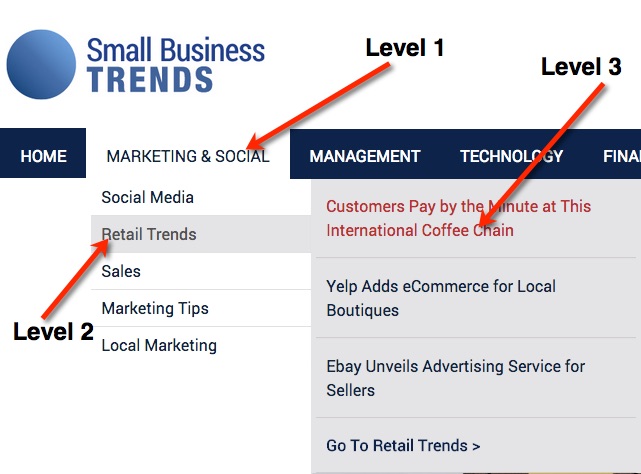
If Sketch is something you're considering for your UI design, you might be wondering about how it compares with other UI designing tools. Let's go over the basics of sketch, its capabilities, and pricing. After you have mastered sketch, you will be able create beautiful apps quickly. Here are some key points to consider when comparing Sketch to other UI design tools.
Basics of sketching an app
Sketch app designing has many aspects. The basic elements are easier than they sound. Radio buttons, radio buttons, and dropdowns are the building blocks of any sketch. These basic building blocks are essential for any sketch. Learn them and you will have the tools to do the job. A sketch tutorial can show you how to create these elements. After mastering these basic skills, you will be able to tackle more complex projects easily. It will help you to navigate through every stage of the project: from researching, to designing and prototyping, to finally deploying your assets.
Sketch is an amazing design tool. Sketch allows you to collaborate with your team members and create beautiful artwork that can be used by developers. You can easily share your ideas and collaborate on design concepts. Then, you can hand off your project to a programmer with little fuss. It supports multiple color fills and borders. It automatically scales, so your design will remain the same size regardless of how large or small it may be.

Sketch feature set
When it comes to designing mobile apps, Sketch is a fantastic tool for developers. Sketch's intuitive design tools allow you to quickly create and modify designs, as well as share them. The 3D model format allows you to create apps, which can then be exported to a variety files. Sketch lets you edit, resize or reposition images easily. Additionally, Sketch can be used to sketch a book for a professional-looking look.
Sketch was developed for web and mobile application designers. It doesn't offer advanced features like Adobe Photoshop. Sketch is less expensive and takes up more disk space than other programs. Sketch could be a great choice for those interested in prototyping. Sketch is a great tool for designers who need to create prototypes quickly and iteratively. Its Artboard feature makes sharing your creations easy.
Pricing model of sketch
The Sketch pricing model in 2013 was quite different to other design software. Originally, Sketch cost $99, and major updates were either free or paid. Bohemian Coding changed its licensing model to an annual fee of $99, after which users are entitled to free updates for one year. Sketch can continue development without being charged a monthly fee.
Sketch has recently redesigned its interface in order to support real-time collaboration. It now offers the option to create designs in the same window as another person. The native Mac app can be downloaded or the cloud service subscribed to. Users who use Windows or Linux computers cannot install Sketch. You can still download the free trial version of Sketch on your computer. Although Sketch's pricing model isn't ideal for everyone, it is acceptable for designers.

Comparison of sketch with other UI design instruments
Sketch is gaining ground on other UI design tools. Figma is a fantastic tool for creating interactive web prototypes. While Sketch has been a preferred choice by product designers, Figma is becoming more popular. These tools have many in common, including the support for plugins that allow designers to create interactive prototyping. Figma and Sketch both work seamlessly with other tools such as Zeplin or Avocode. These two programs are great for the web designer, but Sketch has some significant advantages.
Sketch depends heavily on third-party plug-ins. It allows users to save styles that can be used for text, color, and effects in their final designs. You can also mix styles for individual elements such as text blocks. Sketch does not allow users to change font colors independently. Similarly, XD and Figma only allow users to save character styles for text, meaning that they cannot combine styles on individual elements. Figma is therefore the preferred tool of designers. Sketch's free plan, however, only allows for one file.
FAQ
Can I use a template or framework on my website?
Yes! Yes! Many people use pre-built frameworks or templates when creating websites. These templates include all of the code required to display the information on your webpage.
Some of the most popular templates include:
WordPress - one of the most popular CMSes
Joomla – Another popular open-source CMS
Drupal - A large-scale enterprise solution that large businesses use
Expression Engine – A Yahoo proprietary CMS
There are hundreds of templates available for every platform. It should not be difficult to find the right one.
What is a static web site?
A static website can be hosted anywhere, including GitHub Pages, Amazon S3, Google Cloud Storage, Windows Azure Blob storage, Rackspace Cloud Files, Dreamhost, Media Temple, and others. A static site can be deployed to any platform that supports PHP. This includes WordPress, Drupal Joomla! Magento PrestaShop, Magento and Joomla!
Static websites are typically easier to maintain, as they don’t have to constantly send requests between servers. Also, they load faster because there's no need to send any requests back and forth between servers. These are just a few reasons why static web pages can be a better option for small companies who don't have the resources or time to maintain a website.
How to Create a Static Website
There are two options for creating your first website:
-
Content Management System (a.k.a. WordPress is a Content Management System (a.k.a. This software can then be used to create an indispensable website.
-
You will need to create a static HTML website. This is easy if you know HTML.
If you plan to build a large website, you may want to consider hiring an expert to create your static website.
However, it is a good idea to start with option 2.
Can I use HTML & CCS to build my website?
Yes! If you've been following along so far, you should now understand how to start creating a website.
You're now familiar with the basics of creating a website structure. However, you must also learn HTML and CSS Coding.
HTML stands to represent HyperText Markup Language. This is like writing a recipe. It would list the ingredients, directions, and how to do it. HTML allows you to indicate to a computer which portions of text are bold, italicized and underlined. It also lets you know which part of the document is linked. It's the language for documents.
CSS stands to represent Cascading Stylesheets. Think of it like a style sheet for recipes. Instead of listing each ingredient and instructing, you can write down general guidelines for font sizes, colors and spacing.
HTML tells the browser how a page should look; CSS tells it what to do.
You don't have to be a prodigy if you don’t get the terms. Follow the tutorials and you will soon be creating beautiful websites.
Statistics
- Is your web design optimized for mobile? Over 50% of internet users browse websites using a mobile device. (wix.com)
- The average website user will read about 20% of the text on any given page, so it's crucial to entice them with an appropriate vibe. (websitebuilderexpert.com)
- It's estimated that in 2022, over 2.14 billion people will purchase goods and services online. (wix.com)
- Studies show that 77% of satisfied customers will recommend your business or service to a friend after having a positive experience. (wix.com)
- In fact, according to Color Matters, a signature color can boost brand recognition by 80%. There's a lot of psychology behind people's perception of color, so it's important to understand how it's used with your industry. (websitebuilderexpert.com)
External Links
How To
How to become a web developer?
A website does not simply contain HTML code. A website is more than just HTML code. It's an interactive platform which allows you to interact with users and provide valuable content.
A website is not only a tool for delivering information, it's a portal that connects you to your customers. It should help customers find what they need quickly and efficiently while also showing them how you want them to interact with your company.
The best websites let visitors do exactly what it says on the tin: find what they are looking for, then go.
This goal will require you to master technical skills and aesthetics. You'll need to learn HTML5 coding and CSS3 styling as well as the latest developments in JavaScript.
Also, you'll need to learn how to use tools like Photoshop, Illustrator, InDesign and Fireworks. This allows designers to create and edit web graphics and layouts. You'll also need to create a style guide that includes everything, from fonts to colors to layout.
To learn more about becoming a web designer, you can start by reading articles or taking online courses.
Although it might take you months or even years to finish your degree program you will be ready to join the workforce once you have earned it.
Keep practicing! Designing will improve your ability to build great websites.